











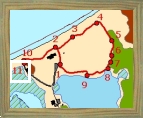
Salt marshes are highly productive habitats, teeming with marine animals that spend all or some portion of their lives in the ocean's "nursery." | |||||
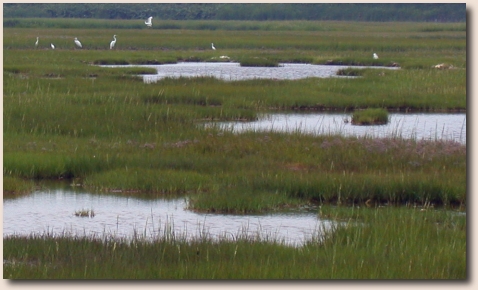 | |||||
A yearly harvest of salt-marsh hay was once an important source of fodder for livestock. Herons, egrets, and migrating shorebirds that forage along the creek and in the salt pannes (pictured below) of the marsh continue to benefit from the high productivity. | |||||
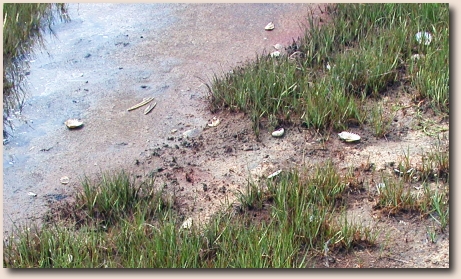 | |||||
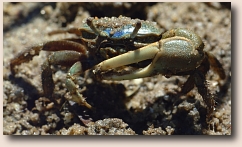 Slight changes in elevation create dramatic differences in the vegetation of the salt marsh, which results in several different plant communities in close proximity to one another. Due to regular flooding, the peaty sands of the salt marsh are anaerobic, or oxygen-deficient. Salt-marsh hay (Spartina patens) and spike grass (Distichlis spicata) dominate in higher areas with less frequent tidal flooding. Both spartina species have adapted to life in the tidal salt marsh; their stems are hollow, enabling oxygen to travel down to the roots. |
Salt marshes are fascinating places, and it is especially tempting to explore the shallow waters and the grassy expanses. You will be further rewarded if you take the time to look around at the entire environment, from the sky above where gulls, osprey, and harriers soar, to the sand at low tide where you may find skate egg cases, snail trails, tube worm casings, and a myriad of small creatures. If you look closely, you may be able to spot tiger beetles running on the beach. |

|




| The Nantucket Field Station Virtual Nature Trail is a joint effort of the following departments: Biology, Computer Science, Earth & Geographic Sciences, and ECOS. |
| All images are copyright 2002 UMB and may not be reproduced without permission. |
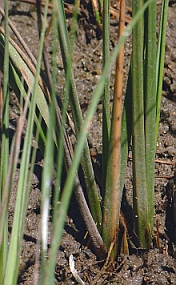 Salt-marsh cordgrass (Spartina alterniflora) dominates in low places flooded daily by the tides, with help from the
Salt-marsh cordgrass (Spartina alterniflora) dominates in low places flooded daily by the tides, with help from the